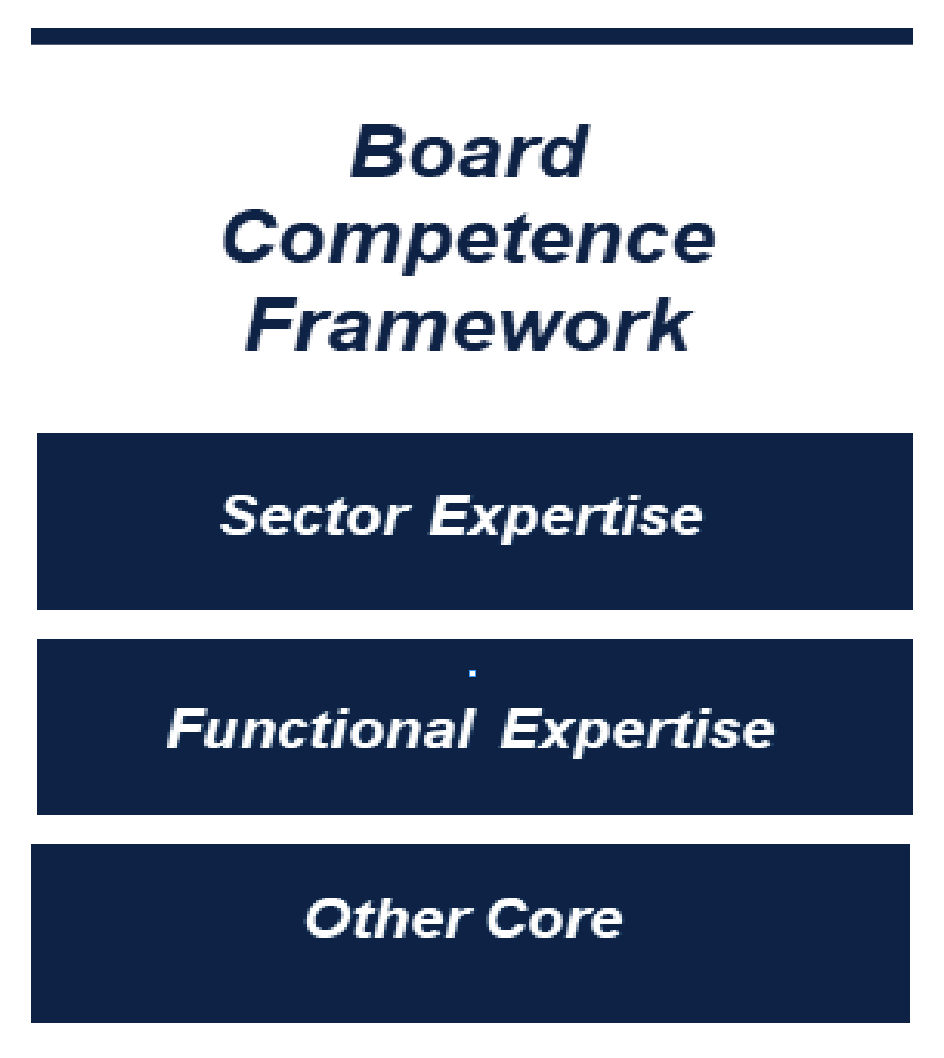

Transforming Governance
Board Competence Framework: Know Your Strengths
Strategies and Implementation Methods for Sustainable Outcomes
By John McFarland and Tammy Jackson
We are reminded constantly today that our organizations are not measuring up with regard to board diversity, one of many areas that boards can continue to leverage to further optimize their governance structures. While many boards are prioritizing this facet of optimization, traditional practices sometimes inhibit the speed of change. Although various studies show that boards with a more diverse membership offer a greater array of unique solutions and strategies, and typically outpace those with a less diverse body in regard to organizational growth, profitability and sustainability, reports continue to highlight that hospital boards are slow in meeting their diversity goals. While no board is perfect, we can share the following recommendations on how to implement a sustainable process to mitigate gaps and hasten change.
Board Strategic Analysis
As the board of trustees’ responsibility is to guide annual priorities, objectives and strategies for the hospital, the governing body must truly understand their market conditions and the correlating trustee competencies to do this effectively. While boards supply strategic planning for their organizations, many fall short in applying the underlying analysis to a governance framework that ensures the collective knowledge, experiences and background of trustees can successfully support the strategy. So, the question becomes: How do we link the two? To begin, consider looking at the following three key areas to bring clarity around specific board competencies needed to support the framework:
- Strategic Priorities
- Opportunities
- Challenges
Whether your strategic priorities are increasing profitability, your opportunities are centered around differentiation through Centers of Excellence, or your challenges are mainly improving efficiency throughout hospital operations (all individual examples), list and define all that apply to the organization. Boards likely already have this information readily available from their strategic planning process. Taking the extra step of identifying specific and key competencies, experiences and backgrounds to support the strategy is the critical link in developing the Board Competence Framework.
The Board Competence Framework should be realistic and succinct but detailed enough to identify the right trustees to support the strategy. To accomplish this, consider aligning specific competencies, experiences and backgrounds under three main categories: Sector Expertise, Functional Expertise and Other Core. For example, a framework may look as follows:

Sector Expertise
- Health Care
- Research & Development
- Hospitality & Retail
Functional Expertise
- Operational Efficiency
- M&A/Integration
- Service Excellence
- Technology & Security
- Accounting/Audit
Other Core
- Diversity
- Geographic Expertise
As seen in the above example, diversity would fall under the Other Core category. Its place is defined and realized by the board in conjunction with the organization’s strategic pursuits. Diversity, like every other facet, should not be an and/or, but rather an integrated piece of the framework to create lasting sustainability.
Analysis of Board Competence Framework
As appealing as it may be to only apply the Board Competence Framework to new trustee hires or appointments, true analysis requires that the current board measure itself against the framework to understand its gaps and make appropriate improvements in the future. Taking the following steps can give a clear indication of where the board sits currently from a diversity perspective and specific timeline opportunities to address the gap, should it exist.
Understand Trustee Terms/Timelines. Develop an outline of current trustees and their respective departure dates. This presents a timeline of when gaps can be addressed, but it also depicts windows of overlap with regard to different competencies in the Board Competence Framework.
Evaluation of Board Trustees. Review each trustee against the developed Board Competence Framework. This includes cross walking an individual’s career, experiences and background against each competency of the framework. Does a trustee have deep knowledge and/or experience, some knowledge and/or experience or none at all? This needs to be documented for each trustee, so there is a clear picture of one’s core strengths, experiences and background correlated with other trustees. A self-review of this nature will likely come with some initial tensions. It is important that the entire board is committed, transparent and takes ownership of the current state and improvements for the future.
Build Dashboards. Do not let your hard work and analysis go to waste! Build dashboards to engender accountability and sustainability for a process that will outlive the board if given due care. Dashboards will also be the central support for recruiting specific profiles for new Trustees. To get started, simply transpose your review of each Trustee against the Board Competence Framework into a table format. If a trustee has deep knowledge or experience around a specific competency, mark it green; if only some knowledge, mark as yellow; if none, mark as red. Using this dashboard, the Board can quickly summarize the governance structure’s health against the developed Board Competence Framework.
Build a Trustee Pipeline. Based on the analysis of the Board Competence Framework, gaps identified, profiles of trustees to be recruited and the ideal timeframe for their appointment, it is natural to only want to search for individuals who offer more of the competencies in the framework, as opposed to those who do not. It is important to keep in mind, though, that depending on different circumstances and factors, sometimes a competency gap may need to be filled with someone solely focused in that specific area if all or most of the others are covered. We partner with boards to build a “living” talent pipeline with external candidates. This pipeline is nurtured by relationship-building activities by the board itself and Odgers Berndtson.
Summary
Yes, board diversity is important, but it must be rooted and integrated into a thoughtful Board Competence Framework to be effective and sustainable. That approach will change a board into a formidable team that performs effectively around each other’s strengths and differences.
John McFarland ( john.mcfarland@odgersberndtson.com) and Tammy Jackson (tammy.jackson@odgersberndtson.com) are partners in Odgers Berndtson’s Healthcare Practice based in Atlanta.
Please note that the views of authors do not always reflect the views of AHA.
